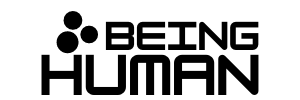When vulnerability becomes the gateway to breakthrough
You can feel it the instant it happens. The energy in the room shifts. People lean forward instead of back. Eyes meet instead of dart away. Someone has just shared something real, not a polished talking point or a safe opinion, but an actual truth that matters to them.
And in that moment, your gathering transforms from a meeting to something alive.
I've facilitated hundreds of sessions across industries, from healthcare innovation labs to creative strategy workshops, and I can tell you this: authentic engagement doesn't begin when someone shares the right answer. It begins when someone shares the right kind of truth.
The right kind of truth sounds like:
"I'm actually terrified this won't work"
"I don't understand why we keep avoiding the obvious problem"
"I've made this exact mistake before, and here's what I learned"
"I'm passionate about this because..."
These moments of vulnerable truth-sharing don't happen by accident. They happen when psychological safety has been carefully, and intentionally cultivated.
Psychological safety has become a workplace buzzword, but most people misunderstand what it actually means in practice. It's not about being nice or avoiding difficult conversations. It's about creating conditions where people feel safe to be human, with all the uncertainty, passion, and imperfection that entails.
Amy Edmondson, who coined the term, defines psychological safety as "a belief that one can speak up without risk of punishment or humiliation." But in my experience facilitating groups, I'd add this: it's the felt sense that your authentic contribution will be received as a gift, not a liability.
Creating this environment is the facilitator's most crucial and least visible work. Before anyone enters the room, you're designing not just for content but for connection. You're considering...
Who's in the room and what they might be carrying? The executive who feels pressure to have all the answers. The creative who's been shut down in corporate settings before. The subject matter expert who's tired of being seen only as a resource.
What permission do people need to show up fully? Sometimes it's explicit: "We're here to explore, not decide." Sometimes it's modelled: you share your own uncertainty first. Sometimes it's structural: small groups before large ones, anonymous input before named contributions.
How will you respond when someone takes a risk? This is everything. The first person who shares something vulnerable is essentially testing whether this space is actually safe. Your response – not just your words, but your energy, your body language, your follow-up questions – teaches everyone else what's possible here.
Here's what's counterintuitive: the most professionally productive conversations often emerge from personally vulnerable moments. When someone admits they're confused, it gives others permission to ask clarifying questions. When someone shares a failure, it opens space for honest assessment of risks. When someone reveals what they care deeply about, it transforms abstract strategy into meaningful purpose.
I remember facilitating a strategy session where a senior leader finally said, "I keep pushing for this initiative because my daughter asked me last week what I actually accomplished at work, and I couldn't give her an answer that felt true." The room went quiet. Then came the most honest conversation about organisational purpose I'd ever witnessed in a corporate setting.
The vulnerability wasn't the point it was the gateway. It created the conditions for truth-telling that led to a breakthrough strategy.
Notice I'm not talking about safe spaces...but brave ones. Brave spaces acknowledge that meaningful engagement requires some risk. The goal isn't to eliminate discomfort but to ensure that discomfort serves growth rather than shame.
This means:
Naming the stakes clearly. People can only be appropriately vulnerable when they understand the context and consequences.
Modelling first. As the facilitator, you set the emotional temperature. Your willingness to be human gives others permission to do the same.
Protecting risk-takers. When someone shares vulnerably, how you receive and redirect that energy determines whether others will follow.
Distinguishing between person and position. You can challenge ideas passionately while maintaining care for the humans who hold them.
When vulnerable truth-sharing creates authentic engagement, the effects extend far beyond that single gathering. Teams who've experienced this kind of connection work differently together afterwards. They ask better questions, share concerns earlier, and navigate conflict more skilfully because they've practised showing up as whole humans in service of shared outcomes.
One participant in my Facilitator Accelerator program reflected: "I used to think I had to have all the answers. Now I realise my job is to create the conditions where the right questions can emerge." That's the shift from facilitating content to facilitating connection.
So before your next meeting, workshop, or strategy session, ask yourself...
"What would need to be true for someone to risk being genuinely themselves in this space?"
The answer to that question might be the difference between a gathering that accomplishes tasks and one that changes how people see what's possible when humans come together with shared purpose and mutual care.
Because the most powerful insights don't emerge from perfectly polished presentations. They emerge from the messy, brave, beautiful moment when someone decides to tell the truth and discovers they're not alone in it.

